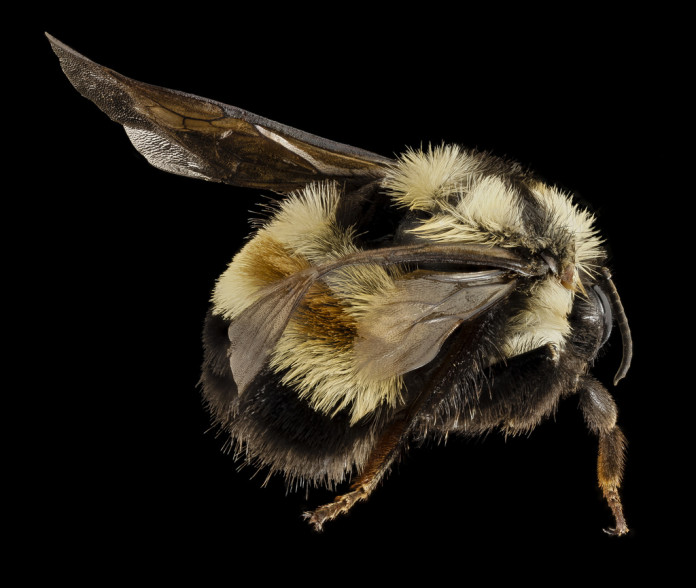
The rusty patched bumble bee is now a recognized endangered species under the Endangered Species Act, by the U.S. Fish and Wildlife Service.
Rusty patched bees are native to North America. Twenty years ago they bumbled and buzzed across the entire eastern United States, but today they are present in only 13 states, including Ohio.
Ohioans can help to bring the bee back by learning about their lifecycle and behavior, and creating habitat that supports repopulation.
Beehavior
Unlike wasps whom build their nests high, rusty patched bumbles build their nests underground in cavities or abandoned rodent holes. They nest, reproduce and then hibernate over winter. In spring new queens emerge and worker bees hatch. Bees leave the nest to feast on flowering plants, collecting pollen and nectar from the landscape.
Seventy-five percent of agricultural crops depend on pollination. The rusty patched bumble bee is a known pollinator of berries, tomatoes and legumes. The value of global crops affected by pollinators is between $235 to $577 billion dollars, according to Pollinators Vital to Our Food Supply Under Threat — a press release from The Intergovernmental Science-Policy Platform on Biodiversity and Ecosystem Services (Feb 2016).
Declining native bee populations
The rusty patched bumble bee is the first bumble bee species to gain protection under the Endangered Species Program, but it is one of several bee species on the decline. The death of native bees has been attributed by multiple factors: habitat loss, chemical applications and climate change.
Ground dwelling bees are particularly susceptible to habitat loss resulting from land development. They are also vulnerable to ground level chemical applications.
Neonicotinoids are insecticides applied to fields, lawn and turf. They are often applied in early spring, the time rusty bumbles emerge from hibernation. Chemical residue remains in the soil and lingers on spring growth. It contaminates the bees’ food and water supply. Neonicotinoids attack bees’ nervous systems. Infected bees forage less and pollinate fewer plants. Their work and reproduction lags. As a result, colonies often fail to survive.
There is evidence that climate change also contributes to declining bee populations. Higher summer temperatures decrease flight time and pollination activity. Repeated freezing and thawing of the ground in winter may disturb ground dwelling bees’ nests. Changing biodiversity and bloom patterns due to climate change causes interruptions in bees’ food supply.
Take action to save native bees
Government and private organizations are working to protect endangered species populations through research, education, conservation and habitat restoration. The U.S Fish and Wildlife Service’s mission is to protect and restore endangered species populations and their native habitats.
The USDA Natural Resource Conservation Service partners with private landowners to provide pollinator friendly habitats and conservation improvements.
The North American Pollinator Protection Campaign coordinates efforts with 160 government and private organizations to increase awareness and educate the public on the importance of native pollinators.
Ohioans can help save the rusty patched bumble bee by planting pollinator-friendly native plants in our backyards. Cultivating natural landscapes with less or without chemicals is safer for bees, pets and humans alike. Providing food, shelter and water attracts pollinators to your yard and supports healthy population growth. Learn how to attract pollinators to your yard.
Resources
- The U.S Fish and Wildlife Service factsheet
- The USDA Natural Resource Conservation Service
- The North American Pollinator Protection Campaign
Related Content
- How to attract pollinators to your yard
- Pollination: The lone bees
- How do I attract native bees to my yard and garden?
- Will removing neonics save the bees?
- Save the bees: Ortho removes pesticides thought to harm pollinators
- How to treat bee stings with household items










